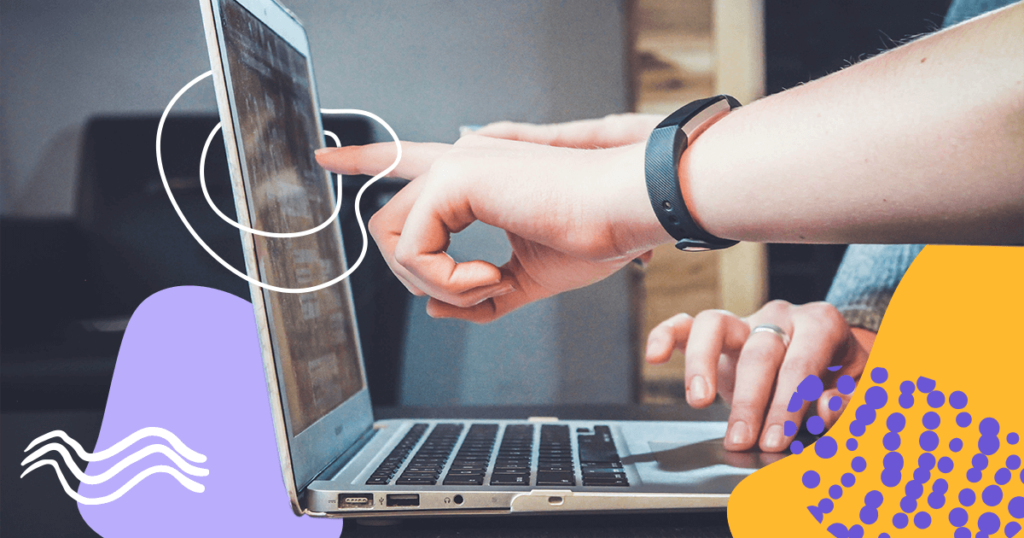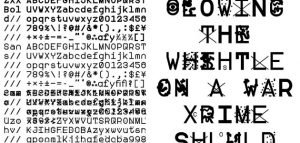Before working at Rock Content, I had never had any contact with digital marketing—or so I thought.
At the time, I didn’t fully grasp the extent of digital marketing and the amount of work it involves. Just to give you an idea, I used to believe that every marketing team had a developer on board. Otherwise, how could a company like Apple create interactive experiences for each new product launch?
Now, having managed more than 50 interactive content creation projects, I laugh (and kind of cringe) when I think back to that time. You see, I don’t code. I don’t know HTML, and I’m still unsure about what CSS stands for.
The journey from knowing nothing about marketing or code to where I am today was long, but it all started with one question:
Why use interactive content instead of static materials?
When I first started working with content creation, I was quite intimidated by interactive content, and I didn’t really see its purpose. Why invest all this additional effort when static materials can convey the same information?
I have very limited knowledge about design, and everything I do know, I learned here while working as a project manager for Rock Content. So, naturally, it seemed much more straightforward to me not to worry about designing and coding a whole page just to use the same copy we could have used in an ebook.
However, as I learned more and consumed more content, I began to grasp the strategic aspect of interactive content: it’s more like a conversation than a lecture.
When you use static content, you’re merely providing the user with information and hoping they provide some feedback.
In contrast, when you use interactive content, you’re inviting them to a conversation. You’ll be able to observe how they interact with each part of your content, understand what interests them the most, and identify which subjects perform better—even if the user never writes you a single word.
If you’re solely focused on metrics, interactive content typically results in better engagement, higher conversion rates, and increased time spent on the page.
Read also: How I Increased an E-Book’s Conversion Rate by 20.7% Through Interactivity
Moreover, if you’re considering the user experience, it’s quite intuitive: interactivity holds your interest much more than reading a block of text.
At this point, I still had one question: Even with all that considered, is it still worthwhile to code an entire interactive page?
What are no-code solutions, anyway?
We live in an era where nearly everyone has heard at least one of these terms: CSS, JavaScript, HTML, Python, etc.
Learning how to program has never been more important (no wonder I used to think every marketing department had a developer on their team).
It was genuinely surprising to learn that not only do most marketing departments lack a developer, but they also tend to be severely understaffed.
Considering this, and the fact that most people neither know how to code nor want to learn it, some amazing platforms provide no-code solutions for designing websites, blogs, and yes, interactive experiences.
The idea is that you’re able to create without having to code everything from scratch – or anything, really. Instead, you can simply click and drag different elements to where you’d like them to be, and that’s it.
No-code solutions for interactive content
No-code solutions are already quite popular for website and blog creation. If you watch YouTube as much as I do, you’ve probably heard about Wix or Squarespace.
But what if you don’t want to build a whole new site? What if you’re just looking to create interactive content to differentiate your campaign?
My favorite tool for this is Ion. Yes, I know, I’m biased, but I’ve also witnessed the power of this platform time and time again.
As a project manager, one of the most important aspects for me is to build rapport with my customers so I can truly understand their needs. I can tell you there’s no better way to connect with someone than to share experiences with something you don’t know much about, and for me, that’s coding. Most of my customers hate it.
Considering this scenario, here are some of the main advantages I see in Ion:
Easily apply your branding to the content
You’ll need to include your brand materials on the platform before using it for the first time. No coding involved here.
After that, everything you need is easily available whenever you create a new experience, ensuring your team stays within your brand guidelines.
Easily change your branding
Did your team just revamp your marketing materials, and now you’re wondering how to update every single creative piece you have? It’s quite simple: after you update only the necessary assets, your interactive content will update automatically.
Even if you decide to change everything and create a whole new guide, a single click of a button will guarantee your creatives are updated as well.
Content-led design
When you’re creating your experience in Ion, you can use one of its many functionalities to better highlight the information, ensuring that you’ll have the best showcase for your carefully crafted content every single time, just by dragging and dropping the elements on the page.
Tags everywhere
If you’re a project manager or someone who works with data, this is where Ion thrives.
You can tag different elements of your experience with just a couple of clicks of the mouse, and know exactly how much time your user spent on each page, which elements and sections were the most engaging, and where they are accessing the experience from.
Not to mention a full view of the funnel: how many unique users you got, how many engaged and converted.
Quick and easy
For short-staffed teams, Ion can be your work bestie: it’s possible to create simple experiences in about two hours, from start to launch.
The platform offers pre-set templates that you can use. Again, with just a few clicks, you can add your brand’s materials, copy, and images, and you’ll be ready to go.
Different types of experiences
Most people think no-code solutions are only available for ebooks or landing pages. However, you can go much further than that.
With ten different types of experiences, Ion helps you to make the most out of your content in every stage of your funnel.
Read also: How do we use interactive content in Rock Content’s marketing strategy?
Going further than the interactive landing page
Each stage of the customer’s journey calls for different types of content, and this holds true for interactive experiences as well.
If you’re engaging with someone who has just discovered your brand, discussing the merits of your product may not be the most effective approach. Therefore, it doesn’t really make sense to provide them with a microsite that solely highlights your solutions for their challenges.
Conversely, when your customer is already interested in doing business with you, a simple infographic may not be the deciding factor.
Consider viewing your content from your persona’s perspective: What pain points do they have? What challenges do they face? And how can you provide assistance?
As a good rule of thumb, landing pages and interactive infographics tend to work well when you’re aiming for brand awareness, as they can quickly showcase different percentages and scenarios.
Ebooks, assessments, quizzes, and whitepapers are best suited for the middle of the funnel when the customer understands the options available to solve their problems.
Last but not least, calculators are excellent for the end of the funnel. Typically, most calculators require a significant amount of information or sensitive data to function. Your customers are more likely to provide this data if they already trust your brand.
A common request I receive from my customers is to revamp a page on their website to make it more interactive. This could involve creating a more engaging “About Us” page for both customers and employees or embedding a “Solution Finder” to assist customers in finding the best solutions.
In these cases, there’s a small amount of coding involved. Your team will need to embed the interactive page using an iframe. That’s it—no more code to worry about.
My favorite use cases for middle and end-of-the-funnel experiences are related to VSP Vision Care. Their customers didn’t know which plans would satisfy their needs best or offer the best cost-benefit.
Ion not only solved this problem with a savings calculator, allowing users to assess plan value based on their specific needs and financial scenarios, but it also assisted VSP’s team in developing a sophisticated product wizard. This wizard generates personalized recommendations for each customer, with 98% of them mentioning it as highly useful.
Increased performance (no matter the format)
I mentioned earlier how the performance of your content can be enhanced by transitioning from a static format to an interactive experience. Let me illustrate this with a real example: Hootsuite’s Social Media Trends 2022 report.
Through Ion, they managed to make the most out of their content and data, transforming a report, typically content-heavy and not particularly engaging to read, into a beautiful, informative, and digestible experience.
This made the entire content much easier to read and retain and expressed the brand’s essence much better than a PDF file.
That year, unique traffic visiting the Report pages increased by 34%, while time spent on the page went up by 119%, while the number of downloads grew by more than 30%.
Pretty good, huh?
Read also: How Hootsuite Transformed Its Largest Annual Campaign
Here’s a fun fact: did you know that 75% of marketers use interactivity to enhance educational content? By engaging with different elements on the screen and even answering quiz questions, the user’s retention of your content increases exponentially.
Final Thoughts
Interactive content isn’t just the future of content creation; it’s already the present.
You can use it to make your strategy more versatile. It can help educate your customers, raise awareness of your products and solutions, or even assist your own team in effectively communicating your brand’s value.
Don’t let your concerns about coding deter you from adding this tool to your arsenal.
If you do have some coding knowledge, you can further customize it using CSS. If you don’t code, you can simply forget that programming exists and focus on what you do best: creating content and thinking about your clients.
No HTML required.
Want to see how to add interactivity to your marketing? Click here to get a free demo with one of our specialists.
Start creating interactive content with Ion and increase your marketing results!
Start creating interactive content with Ion and increase your marketing results!







